Adrian Collins's Blog, page 176
May 7, 2021
REVIEW: Fevre Dream by George R.R. Martin
George R.R. Martin needs no introduction to fans of grimdark. After all, the subgenre as we know it today may not have been invented by A Song of Ice and Fire, but it certainly owes a great debt to it for popularizing the literary movement. However, George R.R. Martin has other equally worthy works and perhaps the best of them, in my opinion at least, is Fevre Dream. It is a Southern Gothic vampire novel published in 1982 and is arguably a new modern classic. While not as influential as Anne Rice’s Vampire Chronicles, which coincidentally share a location, it is certainly a fantastic book.
 Fevre Dream is a novel set in the pre-Civil War era of the American South, specifically on the various rivers plied by steamboats before railroads and later motor cars made them obsolete. I note this is already my jam since steamboat replicas remain a curiosity still plying the rivers outside my hometown. Even my jam is the fact is the fact this is a vampire novel, as mentioned above, and one of the most well-written ones I’ve ever had the privilege of enjoying.
Fevre Dream is a novel set in the pre-Civil War era of the American South, specifically on the various rivers plied by steamboats before railroads and later motor cars made them obsolete. I note this is already my jam since steamboat replicas remain a curiosity still plying the rivers outside my hometown. Even my jam is the fact is the fact this is a vampire novel, as mentioned above, and one of the most well-written ones I’ve ever had the privilege of enjoying.
The premise is a financially insolvent steamboat captain, Abner Marsh, is approached by a wealthy businessman with a too-good-to-be-true offer to build the world’s most luxurious steamboat. The man, Joshua York, has only the conditions that it will occasionally divert from its preordained paths to carry out his personal business. Furthermore, they are to never bother him during the day or question his activities onboard. This being set before Dracula or Carmilla, Abner finds this mostly just a wealthy man’s eccentricity.
At the bottom of the South near New Orleans, a vampire named Damon Julian, is living in a ruin of a plantation. He’s murdered most of his slaves, sold off the better portion of the land, and now regularly buys sex slaves to feed his rapacious coven. He is a thoroughly despicable character, reminiscent of Roose Bolton and Tywin Lannister, but exceeded by his human servant’s depravity. Sour Billy Tipton is a former Overseer who has become Julian’s assistant, acquiring victims for his appetite and being a disgusting racist to boot.
Speaking of racism, a warning to readers that this contains a lot of racially charged language. that is period appropriate but can be troubling to readers looking for escapism. The book also does not provide anything in the way of black perspectives with the only African American characters being victims or very minor roles. This strikes me as a missed opportunity as there are several places where I feel like events being from their perspective would have worked better than sticking with either Abner or Sour Billy. We never even get the perspective of the vampire characters and they remain somewhat aloof and mysterious.
Martin has a spectacular gift for putting you in the worlds he creates and while the Antebellum South of Fevre Dream is a real place, he manages to immerse you in the peculiar culture of the time. You really do feel like you’re on a steamboat in the mid-19th century of America’s South and the first half of the book is deeply engaging. Unfortunately, it loses some punch around the midway point due to a change in focus that would be spoiling to reveal.
Martin’s vampires are very well-designed with a focus on making them human-like and scientific rather than supernatural. They have supernatural legends (descendants of Cain) but it is implied that they are simply a parallel race that evolved alongside humankind as predators. They are depicted as pure predators who are dominated by a red thirst that has no talent for creation themselves. Vampires are parasites that do not create art, culture, or architecture but merely steal from humans. Those who are annoyed by “good” vampires will be irritated by one’s attempt to redeem his species but the twists there were quite good, IMHO.
Martin’s vampires are very well-designed with a focus on making them human-like and scientific rather than supernatural. They have supernatural legends (descendants of Cain) but it is implied that they are simply a parallel race that evolved alongside humankind as predators. They are depicted as pure predators who are dominated by a red thirst that has no talent for creation themselves. Vampires are parasites that do not create art, culture, or architecture but merely steal from humans. Those who are annoyed by “good” vampires will be irritated by one’s attempt to redeem his species but the twists there were quite good, IMHO.
Perhaps the biggest appeal for grimdark fans is the fact that the characters aren’t purely good or evil. Joshua York has dozens, if not hundreds, of innocent deaths on his hands. Abner Marsh is vaguely against slavery but considers abolitionists to be the 19th century version of religious terrorists. An attitude that the vampires find hilarious since they claim similar rights to humans that whites expect of blacks. There’s also a very good argument that the Pale King is wrong to want to redeem vampires and that they probably should just all be destroyed. It’s just they’re up against absolute monsters in Julian and Sour Billy.
In conclusion, I strongly recommend Fevre Dream. If you aren’t completely burnt out on vampires and even if you are to an extent, it is a fantastic (fangtastic?) novel. The only complaints I have are the handling of African American characters and the denouement being a bit disappointing. Otherwise, it is a modern classic. It should be noted that I am also familiar with the comic book adaptation and think it did an excellent job visualizing the characters in the novel.
Read Fevre Dream by George R.R. Martin
The post REVIEW: Fevre Dream by George R.R. Martin appeared first on Grimdark Magazine.
May 6, 2021
REVIEW: Blood Sacrifice by Peter McLean
Corporal Cully returns to the page in Blood Sacrifice by Peter McLean. Another entry in Black Library’s new (ish) horror line of fiction, Blood Sacrifice really plays up the horror aspect significantly more than Story one in this series, Night by Baphomet.
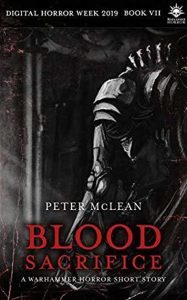 Three years and a campaign against the orks later, we find Cully on Hive world Voltoth, still mourning the loss of his friend back on Baphomet, digging a trench and waiting for the orks to come. Once again themes of PTSD and the horror and endless grind of life in the guard are key themes that McLean plays with, but this time we have more of a crack squad of troopers around Cully, as opposed to raw recruits.
Three years and a campaign against the orks later, we find Cully on Hive world Voltoth, still mourning the loss of his friend back on Baphomet, digging a trench and waiting for the orks to come. Once again themes of PTSD and the horror and endless grind of life in the guard are key themes that McLean plays with, but this time we have more of a crack squad of troopers around Cully, as opposed to raw recruits.
Setting off into the parts of the hive city abandoned to the oncoming orks with a racketeer, a sniper, a scout, and some hardened Guardsmen, Cully just wants to make a little easy money to ease his existence. However, the score isn’t as easy as he’s been convinccii-fied, and the enemy is not who you think it is.
McLean has really nailed this second Corporal Cully story, with writing craft we’re used to seeing from the Priest of Bones author really on show in Blood Sacrifice. The scene is well set, the action full on, and the horror aspect really makes best use of the setting to deliver something that will really get your spine tingling.
I’m not sure if there are any more Corporal Cully short stories on the way, but I hope against hope their are because McLean is really hitting his stride with this character and has now shown a penchant for delving into some of the more underused lore aspects of the setting. I highly recommend Blood Sacrifice by Peter McLean—even if Baphomet by Night wasn’t for you, definitely pick this story up.
4/5
Read Blood Sacrifice by Peter McLean
The post REVIEW: Blood Sacrifice by Peter McLean appeared first on Grimdark Magazine.
May 5, 2021
REVIEW: Baphomet by Night by Peter McLean
In Baphomet by Night by Peter McLean Corporal Cully drops onto forged world Baphomet with two other experienced leaders and a couple of squads of green troops fresh out of boot camp for a two month stint babysitting the post-war wreckage of a city. The Cadians they relieve are beaten but unbroken, and they have plenty of food and ammunition. Looks like it’s going to be a cakewalk. But it wouldn’t be life in the Astra Militarium or Warhammer 40k if it was.
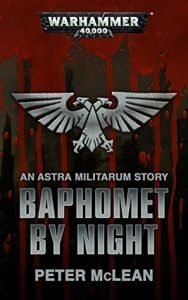 Baphomet by Night is a short story depicting a Guard platoon put into a situation that starts out rosy and quickly goes south from there in a true SNAFU fashion. It has all the ingredients you want in an Astra Militarium story: grit, a little dark humour, bombed out forge worlds, Imperial stupidity making things worse, and with Black Library starting to introduce some horror titles into their catalogue, a few stomach churning paragraphs here and there.
Baphomet by Night is a short story depicting a Guard platoon put into a situation that starts out rosy and quickly goes south from there in a true SNAFU fashion. It has all the ingredients you want in an Astra Militarium story: grit, a little dark humour, bombed out forge worlds, Imperial stupidity making things worse, and with Black Library starting to introduce some horror titles into their catalogue, a few stomach churning paragraphs here and there.
As McLean’s non-40k work includes the utterly magnificent War for the Rose Throne series (starting with Priest of Bones, which I cannot recommend enough), we know McLean knows how to write brilliant soldiers, their relationships, their PTSD, and their fighting. In this short fiction form, though, I didn’t feel the relationships between Cully and his green squad really hit (while acknowledging he actively avoided those relationships early on), and his friendship with Sergeant Rachain didn’t really feel like it was many campaigns deep.
Having said that, Cully is an excellent character, cut straight from the 40k Guard I grew up loving reading about. The story itself ends without much of a twist, a bit of a foregone conclusion, you might say, but was satisfying nonetheless.
Baphomet by Night is a dark take on the standard Guard story, and will meet the expectations of most Guard fans. I am really happy to see that Baphomet by Night is immediately followed by a second short story, Blood Sacrifice. I’ll be reviewing that straight after this one.
Read Baphomet by Night by Peter McLean
The post REVIEW: Baphomet by Night by Peter McLean appeared first on Grimdark Magazine.
May 4, 2021
REVIEW: The Gunslinger by Stephen King
The Gunslinger, originally written by Stephen King from 1978 to 1982 then revised and re-released in 2003, is the first book in the ambitious Dark Tower series, King’s self described ‘magnum opus’. Having read the novel’s initial version nearly two decades ago, my memories of it have blurred over time and thus this review is meant specifically for the modern release.
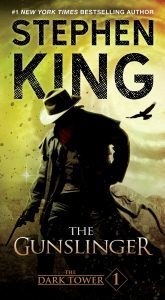 As explained in a lengthy foreword, due to the vast amount of time between having written the first book and completing the seventh, final, book of the sequence, King felt that not only were there too many continuity errors requiring retconning, but that also his own ability as a writer had changed so significantly, that to properly complete his series he would need to revisit his previous work.
As explained in a lengthy foreword, due to the vast amount of time between having written the first book and completing the seventh, final, book of the sequence, King felt that not only were there too many continuity errors requiring retconning, but that also his own ability as a writer had changed so significantly, that to properly complete his series he would need to revisit his previous work.
As a devotee of the series who read on to completion, I found the revision to be an excellent piece of fan-service, weaving in references to later plot threads, adding to the world-building, creating better consistency of characterization, and of course, fixing some continuity issues. Nevertheless, it did occur to me that most of the changes did little to move the needle on the plot or structure of the actual book and that, most likely, an uninitiated reader might find the added references confusing or irrelevant which would surely detract (if only mildly) from the pacing.
I, however, loved every page of it.
The Gunslinger follows the implacable Roland Deschain on his mysterious quest to kill the sorcerous Man in Black. Inspired unabashedly by Milton’s Paradise Lost as well as the western films of Sergio Leone, and of course, The Lord of the Rings, King’s dark fantasy take on The Man With No Name leads us on an relentless quest through a post-apocalyptic hellscape as Roland pursues his quarry at any cost. As the gunslinger draws inexorably closer to his prey, he must navigate the devious traps left behind by the Man in Black, putting his determination, morality and even his sanity to dire test.
Mixing in pieces of Arthurian legend along with bits of modern day nostalgia, King manages to craft a decaying world that feels just familiar enough to be unsettling. In Roland, we find a tragically flawed protagonist seemingly reminiscent of Melville’s Ahab in his obsessive pursuit, though his motives are painted less clearly than the Captain’s more straightforward thirst for revenge. While on the surface, the plot may seem to meander somewhat in its execution, it is in fact carefully constructed to dictate exactly which pieces of Roland’s characterization King wishes to reveal at each stage of the novel, leaving the reader to revisit their assumptions as the story progresses.
Readers of the prolific author’s other works may be surprised at the prose here; while King did revise much of what he felt was ‘pretension’ and ‘hollow blather’ attributed to the immature writing philosophy he employed at the time of its original publication, the voice still reads shockingly differently in comparison to his modern works. This factor actually serves the novel quite well though, as the relatively grandiose (at least for King) verbiage lends a sense of gravity to the events of the novel that his later, more self-assured, writing voice might not have achieved; as King describes it in the foreword, “…for all its faults, it has its own special charms…”
All told, it was a joy to revisit The Gunslinger, which is, to me at least, one of the key progenitors of the modern grimdark genre. While fans of the series tend to overlook this first book in favour of the more stylistically-familiar later series entries, this one always stood out in my memory as one of the strongest due to its tight pacing, darker atmosphere and a couple of truly show-stopping scenes. If you haven’t read this now-classic piece of fantasy yet have found yourself on a grimdark website reading reviews of it, you may wish to strongly consider rectifying the issue by going out and grabbing yourself a copy, posthaste.
Read The Gunslinger by Stephen King
The post REVIEW: The Gunslinger by Stephen King appeared first on Grimdark Magazine.
May 3, 2021
An Interview With Andy Weir
Author Andy Weir, known for his huge breakout hit The Martian, is back again with another brilliant science fiction story called Project Hail Mary. In this story, the world is faced with collapse and has one chance to save itself in the form of a manned scientific mission. It has interstellar travel, mystery, friendship, and excitement. Andy was kind enough to answer some questions for Grimdark Magazine about his reading life, writing, sudden fame, and mental health.
GdM: As a science-fiction nerd and heavy reader, there are books out there that affected me profoundly and changed how I viewed the world. I know that you have a deep love of science fiction going back to being a kid. What are some books that have affected you deeply and why?
I loved the “Caves of Steel” series by Asimov. They showed me that Sci-Fi can be more than just action or adventure stories. It can also be a mystery or, frankly, anything you want. Also, “Red Planet” by Heinlein really hit me in my sense of wonder when I read it as a kid. And, unrelated to Sci-Fi, I loved Terry Pratchett’s books because I learned the value of humor in narration from him.
 GdM: When did you start to build a love of space exploration?
GdM: When did you start to build a love of space exploration?
Pretty much from birth. I don’t ever remember a time when I wasn’t interested in space.
GdM: You were a software engineer at Blizzard in the 1990s. I know that software engineers have a very systematic way of breaking down problems into small, manageable parts and solving those small parts. Is that how you approach writing, breaking down each idea into small pieces? Or do you sit down and let the story flow out from beginning to end?
I generally have the major beats of the story worked out in advance. I know the big plot twists and the ending. But other than that, I let the writing flow naturally. And sometimes that makes me come up with better twists.
GdM: Firstly, let’s talk about The Martian, a huge hit and a beloved member of the science fiction canon. The Martian started as a serialized novel on your website where you had “3000 daily fact-checkers.” What was the daily fact check like versus writing Artemis, or your newest novel, Project Hail Mary?
It was much harder to get all the science right in Artemis and Project Hail Mary for precisely that reason. I put more time and care into research because I knew if I got something wrong, no one would be able to tell me until the book was already in print.
 GdM: The Martian was made into a movie starring Matt Damon; what was that like seeing your ideas and story transformed into a new medium?
GdM: The Martian was made into a movie starring Matt Damon; what was that like seeing your ideas and story transformed into a new medium?
It’s really amazing. The whole experience seemed surreal to me. Like a dream.
GdM: Speaking of different mediums, you have worked in short stories, game design, novels, graphic novels, and webcomics. Is the creative process different for all these different mediums? Or do you approach things similarly?
Generally the same thing across all media. A cool idea followed by hours of work.
GdM: You interviewed with Adam Savage and Astronaut Chris Hadfield, worked with Wil Wheaton, and have been to NASA. You are living the nerd dream right there. What are some other things that you would be interested in doing in the future that is in the same vein?
I love meeting scientists and seeing their labs. Going to NASA was the best experience of my life. I’m not sure what I could ask for that would top it.
GdM: Let’s talk about The Egg. It was quite the deep philosophical dive, especially after I watched the Kurzgesagt video on it. Ovoism sounds like a terrible religion. What do you think about the attention it has gotten, and how did writing it come about?
It was just a story I banged out in 40 minutes one evening. I did a single edit pass then posted it to my site. I didn’t expect it to be significant. It was just one of many short stories I wrote in that period. Then it blew up and got really popular. I’m glad it did.
But I do get the occasional email from someone who believes The Egg is actually true. I always make sure to tell them I don’t think it’s true. It’s just a story I made up. I also don’t believe there’s a guy stranded on Mars. These are just stories.
 GdM: You have been a big proponent of mental health and have spoken very candidly about anxiety. As someone who suffers from anxiety disorder also, thank you for trying to normalize it. How do you work with deadlines, expectations, and the creative process while still maintaining a healthy mental state? I know there must have been a lot of pressure on you as an author after the success of The Martian.
GdM: You have been a big proponent of mental health and have spoken very candidly about anxiety. As someone who suffers from anxiety disorder also, thank you for trying to normalize it. How do you work with deadlines, expectations, and the creative process while still maintaining a healthy mental state? I know there must have been a lot of pressure on you as an author after the success of The Martian.
Yeah it was rough. And the response to Artemis wasn’t what I’d hoped. Though, following-up The Martian, it was going to be difficult no matter what. But I got through. The anxiety was really difficult for me, but it doesn’t actually interfere with me getting work done. It just makes my idle time less fun.
GdM: How has 2020 affected you as a writer?
I thought that, with the pandemic and all, I would get a bunch of writing done. I figured being stuck in the house with literally nowhere to go would help me stay focused. But the opposite was true. I got very little writing done. I couldn’t motivate. I talked to other writers about it and they all had the same problem.
I have come to realize that exterior stimuli are critical for my process. I didn’t know it until now, but my ideas come from my interactions while out in the world, not from brainstorming in my office.
GdM: Can you tell me a bit about your newest story, Project Hail Mary?
Project Hail Mary is about a man who wakes up aboard a spaceship with two dead crewmates. He has no idea who he is or why he’s there. As his memory comes back in bits and pieces, he realizes he’s on a last-ditch mission to save all of humanity from an extinction-level event. No pressure.
GdM: In an interview I watched with Joe Scott, you and he discussed some of the main issues of Mars travel: Radiation, long-term weightlessness on the human body, and people crammed in tin cans for long periods. You addressed these three ideas very thoroughly in Project Hail Mary; at the time of the interview at the end of 2019, had you started writing Project Hail Mary yet?
Yes, in fact I finished the first draft of PHM in January of 2020.
GdM: There is inherent goodness in your protagonists. All of the main protagonists are not perfect, they have flaws, but fundamentally, they have good souls. I found this especially true in your newest book, Project Hail Mary. Do you gravitate towards this kind of character in general in both reading and writing?
I think so, yeah. I tend to write feel-good novels. Because that’s the kind of story I like to read. Also, I’m an optimist in general about humanity. I think we do a good job making life better for everyone and we can really pull together when we have a big problem.
GdM: In an interview I watched that you did years ago, you spoke briefly about a story you wrote called Zhek, which has been described as “a more traditional sci-fi novel with aliens, telepathy, faster-than-light travel, etc.” At the time of the interview, you had said that Zhek got scraped and cannibalized. Did parts of Zhek end up in Project Hail Mary?
Yes! Zhek had an alien technology called “blackmatter” that would absorb all electromagnetic waves and turn them into mass. Then it could turn that mass back into light for propulsion. I took that concept and made it into a lifeform instead of a technology. That’s where I came up with Astrophage – a core plot element in Project Hail Mary.
Also, there was a woman in Zhek who had a tremendous amount of secret authority. She could pretty much order anyone to do anything and they had to do it. I took that character and made her into Stratt for PHM.
 GdM: What was the research like in Project Hail Mary, and where did you get the idea of Astrophage?
GdM: What was the research like in Project Hail Mary, and where did you get the idea of Astrophage?
There was more research for PHM than for either of my previous books. It was a ton of different sciences – physics, relativity, quantum mechanics, relativity, biology, chemistry, materials science, you name it. But I enjoy the research part of a project so it was all fun for me.
I touched on how I came up with Astrophage in the previous question, but to give more information: I wanted a spacecraft fuel that used mass-conversion to make light for propulsion. I originally had that concept of blackmatter from Zhek. I realized that blackmatter was a substance that takes energy to make more of itself. So it was pretty much like life.
So I decided “why not make it actually life? Then I don’t have to have aliens out there who invented it. It just evolved.” So that’s what I did.
GdM: One of the fantastic points you mention in Project Hail Mary was to utilize old and tested technologies as much as possible. I loved this idea, but it is not a common idea in science fiction. Can you tell me a bit about why this idea of utilizing existing technologies was so crucial in the story?
Earth is in serious danger. They don’t have time to spend decades working on the Hail Mary. They need to get it built and launched ASAP. The problem is the mission is one of pure science with a single goal: Find out why Tau Ceti isn’t affected by Astrophage. So the most important part of the ship is the lab. That equipment absolutely has to work perfectly. They don’t have time to invent and test zero-g capable versions of all that equipment. They used off-the-shelf, well-tested equipment. To do that, though, they had to make the Hail Mary have a centrifuge mode so there would be artificial gravity for the equipment.
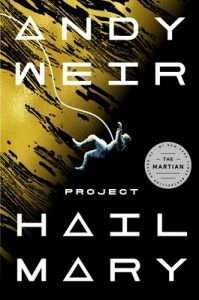 GdM: Did you loosely base Eva Stratt on someone? Her efficiency is terrifying.
GdM: Did you loosely base Eva Stratt on someone? Her efficiency is terrifying.
Thanks! No, she’s not based on any real person. The kernel of her character came from a character in Zhek. But it was all made up by me out of whole cloth. She’s sort of a “I want to be her” character. Wouldn’t it be nice to have unlimited authority and be able to cut through all red tape and procedures?
GdM: And finally, How did you come up with Rocky? He might be one of my favorite characters I have read in a science fiction story.
Aww, thanks. I did want to make him likeable. He’s a fundamentally good person. And the story, at its core, is about friendship. So yeah, I wanted people to like him. But I was surprised at how overwhelmingly people loved him! So much love for the little guy. It’s great!
Check out Our Review of Project Hail Mary
Read Project Hail Mary by Andy Weir
The post An Interview With Andy Weir appeared first on Grimdark Magazine.
May 2, 2021
REVIEW: Berek the Blackguard by Frank Thomas
The path to freedom is marked with treachery and death. Frank Thomas’s Berek The Blackguard is an epic fantasy novella that follows one King’s crusade to liberate his kingdom of Alba.
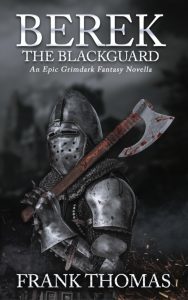 Prior to the events in Berek The Blackguard, the Kryger Emperor had invaded Alba, forcing its then newly appointed King Berek and his tattered army to seek refuge within their own homeland. Their conquerors did not relent and continued to burn and pillage. For seven years, Albans suffered under Kryger’s tyranny.
Prior to the events in Berek The Blackguard, the Kryger Emperor had invaded Alba, forcing its then newly appointed King Berek and his tattered army to seek refuge within their own homeland. Their conquerors did not relent and continued to burn and pillage. For seven years, Albans suffered under Kryger’s tyranny.
Berek The Blackguard is brimming with bloodshed. In one last futile attempt to regain control, King Berek must confront the biggest Kryger army to ever set foot on his soil. The Kryger army numbers a hundred thousand strong, well armed and trained. His own troops are a mere fraction of that size, consisting of starved and wounded Alban men and women. Most of them homeless. A good portion of them too young to even fight. They are weary, but determined to die in battle.
In many ways, King Berek is a fantasy version of John Wick. He is intelligent and cunning. He is renowned as one of the greatest warriors in the world. His own crowning as King of Alba came by slaying his only rival. A victory short-lived.
After Berek secured the throne, the Kryger army invaded. King Berek lost everything in his fight with the Kryger Empire. His brothers were murdered and the rest of his family were imprisoned. Berek The Blackguard is his tale of reckoning. Now, he has to battle his own despair so he can lead his troops to a likely slaughter. King Berek’s quest to free Alba forces him to risk everything and become just as ruthless.
For a novella less than one hundred pages, we witness assassinations, duels, and a grand battle finale.
As action-packed as this story is, the worldbuilding was equally immense. While I was impressed with the author’s ability to craft such a rich tale, the story suffered due to the novella format. A story of this magnitude begs for room to breathe, especially regarding Alba’s history and the battle scenes. It needed a more active prose. I found myself reading the novella twice to fully appreciate it. Berek The Blackguard could have easily been a full-fledged novel and better for it.
Frank Thomas held no limits in showing how savage war is. Berek The Blackguard is a gritty and brutal mayhem. It is a violent gathering of the very worst and most courageous of characters.
Read Berek the Blackguard by Frank Thomas
The post REVIEW: Berek the Blackguard by Frank Thomas appeared first on Grimdark Magazine.
May 1, 2021
REVIEW: We Are Legion (We Are Bob) by Dennis E. Taylor
Oh my heavens. Bob. Bob from We Are Legion might be my spirit animal. You will have to pardon me if I am late for the Bobverse party. This story has been on my TBR forever, but a good friend recommended this as a palette cleanser from all the heavy reading I have been doing lately, I bumped it up. It was the perfect bit of science fiction fun I needed to reset myself. Even better, I downloaded the audible version of this story and listened to it in tandem with reading the book. I am so glad I did. The voice acting rivals Hitchhikers Guide to the Galaxy for how much it laughed. I am a connoisseur of the snark.
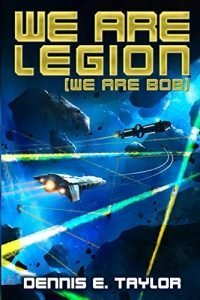 We Are Legion follows Bob Johansson as he is reveling in selling his tech company and be set up for life. What does he do with his newfound wealth? He signs a contract to have his head cryogenically frozen. It sounds like a stretch, but the author Dennis E. Taylor made it work. He sells the idea. Bob is at once a like-able character. He and his employees, whom he treats as a family, are sitting around laughing and showing support for Bob who just got out of a bad breakup. He mentions the cryogenics thing, and everyone laughs. As they should, it seems like such an absurd thing to do. Later, Bob is crossing the street and bam! Bob gets hit by a car and instantly killed. He wakes up disoriented, looking for his body. Bob’s conscience has been turned into software and downloaded into a computer!
We Are Legion follows Bob Johansson as he is reveling in selling his tech company and be set up for life. What does he do with his newfound wealth? He signs a contract to have his head cryogenically frozen. It sounds like a stretch, but the author Dennis E. Taylor made it work. He sells the idea. Bob is at once a like-able character. He and his employees, whom he treats as a family, are sitting around laughing and showing support for Bob who just got out of a bad breakup. He mentions the cryogenics thing, and everyone laughs. As they should, it seems like such an absurd thing to do. Later, Bob is crossing the street and bam! Bob gets hit by a car and instantly killed. He wakes up disoriented, looking for his body. Bob’s conscience has been turned into software and downloaded into a computer!
What follows in We Are Legion is light science fiction fun. It involves enemies from other countries, duplication, 3D printing, colonization, and the human race. I laughed out loud many times reading this. Especially with the voice acting from the audiobook. This story lends itself to different voices. There are many, many Bob’s by the end of it. You need to be able to differentiate easily, and even though the writing does help with the differentiation, voice changes from the audiobook speaker help a lot.
My only quibble with We Are Legion is it is a bit fragmented. There are so many Bob’s and all their adventures that it can be hard to keep up with who is who and who is doing what. But this small quibble and did not keep me from enjoying the book, far from it. Check this story of the many Bob’s for they are Legion and are coming to save the universe.
This review of We Are Legion was originally published on BeforeWeGoBlog.
Read We Are Legion (We Are Bob) by Dennis E. Taylor
The post REVIEW: We Are Legion (We Are Bob) by Dennis E. Taylor appeared first on Grimdark Magazine.
April 30, 2021
Dragonlance: Where to Start Reading
Dragonlance is one of those series that every fantasy lover should read at least once. It was my gateway to fantasy, and I have an abiding love for the world of Krynn and its inhabitants. However, at over one hundred books, it can be difficult to know where to begin. Here is a quick guide to diving into the Dragonlance books.
First things first:
The Dragonlance Chronicles by Margaret Weis and Tracy HickmanDragons of Autumn Twilight | Dragons of Winter Night | Dragons of Spring Dawning
These are the basis of the entire world. Without these books, you won’t understand much of what happens after. You won’t be able to appreciate the books that take place before (that were nonetheless written later on). This is where you’ll meet some of the best characters ever written. Yup, I mean ever.
Continuing on:
Time of the Twins | War of the Twins | Test of the Twins
According to the authors, the Legends trilogy is meant to be read right after the Chronicles, despite later books being published that take place in-between the original Chronicles. Do not read those later books before reading the Chronicles and Legends. They won’t make a ton of sense and you will miss a good chunk of setup if you do.
The Second Generation by Margaret Weis and Tracy Hickman | Dragons of Summer Flame by Margaret Weis and Tracy Hickman
Now, at this point, after being emotionally devastated, you have a few choices: you can continue on with the “main storyline”, OR you can explore the world a little bit. There’s so much to see, after all! If you choose to continue on with the “main storyline”, next are The Lost Chronicles.
Fleshing out the original books:
The Lost Chronicles by Margaret Weis and Tracy HickmanDragons of the Highlord Skies | Dragons of the Hourglass Mage | Dragons of the Dwarven Depths
These technically don’t further the storyline, as they are meant to take place in-between events covered in the earliest books. They make the original story much bigger, though, and we get to see more of my favorite characters, which is always a plus.
Time to see what happens next:
The Dawning of a New Age | The Day of the Tempest | The Eve of the Maelstrom
To be honest, the Jean Rabe books are probably the Dragonlance books that I’ve read the fewest number of times. However, they do connect what came before with what comes next.
Downfall | Betrayal | Redemption
Carrying on:
The War of Souls trilogy by Margaret Weis and Tracy HickmanDragons of a Fallen Sun | Dragons of a Lost Star | Dragons of a Vanished Moon
Now, it’s on to:
A mber and Ashes | Amber and Iron | Amber and Blood
Now, you are technically more or less caught up on the main storyline. However, here’s where it gets interesting: you’ll notice that this is less than 100+ books. That means you get to pick and choose any side novels that catch your eye. I personally am a huge fan of the Meetings Sextet (which explain how our original companions met), The Legend of Huma, the Preludes, and the Raistlin Chronicles. Honestly, anything written by Margaret Weis or Tracy Hickman is going to be gold. I’m also a big fan of the books written by Douglas Niles and Richard A. Knaak.
Header art taken from the cover of the Dragonlance: Legend of Huma Graphic novel published 2016.
Check out more Dragonlance content here.
The post Dragonlance: Where to Start Reading appeared first on Grimdark Magazine.
April 29, 2021
REVIEW: Vampire: The Masquerade – Winter’s Teeth #6
Vampire: The Masquerade – Winter’s Teeth #6 is the, unsurprisingly, sixth installment of the comic book adaptation of the popular tabletop roleplaying game. It follows the adventures of Cecily Bain, a former Anarch turned friend of the establishment that just wants to be left alone with her mortal sister. Unfortunately, the conflict between vampires and Hunters is impossible to ignore.
 This is the first issue to come out after the events of the first five issues. This is notable because the series was initially only meant to be five issues long before its unexpected popularity expanded its run. With so many other independent comics failing after just enough comics for a trade paperback (TPB) release, this is a big accomplishment. Authors Tim Seeley, Blake Howard and Tini Howard should be proud of what they’ve accomplished as should the magnificent artists who helped bring this all together.
This is the first issue to come out after the events of the first five issues. This is notable because the series was initially only meant to be five issues long before its unexpected popularity expanded its run. With so many other independent comics failing after just enough comics for a trade paperback (TPB) release, this is a big accomplishment. Authors Tim Seeley, Blake Howard and Tini Howard should be proud of what they’ve accomplished as should the magnificent artists who helped bring this all together.
The previous issues had an enormous number of events sweep through the Twin Cities, but the irony of vampire society is the more things change, the more they stay the same. A new Prince is ruling over the city and everything Cecily did to protect herself has been swept under the rug. Now the Prince wants to make friends despite the fact he almost had her killed. Cecily is left with the uncomfortable realization that this might just be the best thing to do.
Cecily’s problems aren’t limited to the treacherous and despicable politics of the undead, however. Cecily has discovered that her “childe”, Alejandra, may actually have been a Hunter that got herself willingly Embraced to be a weapon against the Kindred. It is only a suspicion, though, and sounds like nonsense even to someone as habitually paranoid as Cecily. Also, Cecily is looking for a new sister since her mortal one has since succumbed to dementia.
The book contains a good number of interesting scenes but is primarily a breather after the events of the first story arc. It certainly sets up the events of the next five issues, though, with a terrified Prince, a mysterious vampire coming to vet him, and Cecily’s complicated relationship with Alejandra. We also get a hilarious scene where a Hunter attempts to rescue one of Cecily’s victims only for him to try to record her in order to report an assault. Cecily is as annoyed by this as anyone else.
The story at the back of the book is focused around Mitch and it gives us some interesting insights into the least known character of Colleen’s group. Apparently, he and King Rat used to be friends with Celia. They used to fight the Sabbat in what I presumed was the Nineties war against them before being persecuted by the Camarilla. He’s broken off things with Colleen and is hunting animals in the woods. As a City Gangrel, he turns into an adorable puppy and I no longer hate him.
In conclusion, this is a solid and entertaining issue. I think fans of the series should jump on with issue #1 but this isn’t a bad place to start either if you just want to pick up an enjoyable urban fantasy experience.
Read Vampire: The Masquerade – Winter’s Teeth #6
The post REVIEW: Vampire: The Masquerade – Winter’s Teeth #6 appeared first on Grimdark Magazine.
April 28, 2021
REVIEW: Dark Harvest by Josh Reynolds
I’ve read a lot of Black Library stuff, but never before in the Warhammer Horror sub-section and only once previously in the Age of Sigmar setting. Dark Harvest is set in the Realm of Ghyran (that’s the realm of life magic to those not well versed in the setting) and sees former Sigmarite warrior-priest Harran Blackwood looking to settle an old debt in the isolated town of Wald.
(Disclaimer: I’m reviewing the audiobook, so any misspellings of names comes from that, sorry.)
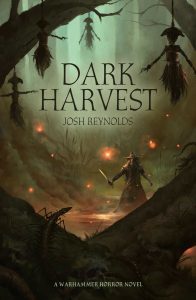 Our protagonist Harran is enigmatic and information about his past, intentions or current beliefs – aside from a realm weary nihilism and willingness to break bones – is dragged out of him most unwillingly. He’s definitely not a ‘good guy’ and that tallies with the generally oppressive setting to make this very much a grim dark story. Dark Harvest boasts a number of secondary characters but most of them feel like plot elements rather than fully fleshed out characters. From the gambler Gint, the Lord Wald and his sheriff, the town headman, all seem like they’re there as foils for Harran or to dish out fetch quests or take beatings.
Our protagonist Harran is enigmatic and information about his past, intentions or current beliefs – aside from a realm weary nihilism and willingness to break bones – is dragged out of him most unwillingly. He’s definitely not a ‘good guy’ and that tallies with the generally oppressive setting to make this very much a grim dark story. Dark Harvest boasts a number of secondary characters but most of them feel like plot elements rather than fully fleshed out characters. From the gambler Gint, the Lord Wald and his sheriff, the town headman, all seem like they’re there as foils for Harran or to dish out fetch quests or take beatings.
The exception is Mern, the former colleague who he’s here to find/kill (I’m never quite sure what Harran really intended to do) who barely actually appears but who’s motivations and character are teased out to some depth at second hand, which is a deft touch.
Like information from Blackwood’s taciturn lips, the plot of Dark Harvest is teased out slowly and puts me in mind of the slow build of the Wicker Man or any number of old school Hammer horror movies. Lots of portents and ominous happenings, but we don’t get to the actual meat of things until the final quarter of the story.
There’s also some sense of the classic American Werewolf in London scene where our protagonist walks into the rural pub and the whole place goes quiet. The vibe of “you’re not from round here” is strong.
The atmosphere of this dilapidated swamp and it’s insular locals is well built and you can literally feel the damp and oppressive murk taking the verdant nature of the realm and twisting it to a darker purpose.
Another thing that’s impressive in Dark Harvest is that Reynolds manages to provide an unanticipated antagonist, as my first two guesses were wide of the mark. It’s a brave step in a franchise that all too often goes for the same old bad guys and it’s very well done.
Also, the horror constructions means that this should be accessible to folks who aren’t necessarily well versed in the Age of Sigmar lore as references to specific gods and entities are contextual enough to be picked up on the fly.
My one real criticism is that the conclusion of the story feels a little underwhelming. It’s clearly intended to lead to the further and darker adventures of Harran Blackwood, but it left me wanting something more definite.
As such, I’ll say that Dark Harvest is a very solid story that builds it’s oppressive setting well and has a compelling protagonist. While the conclusion didn’t quite satisfy, I’m interested in the future adventures of Blackwood, so I guess that’s the point, isn’t it?
4/5
Read Dark Harvest by Josh Reynolds
The post REVIEW: Dark Harvest by Josh Reynolds appeared first on Grimdark Magazine.



